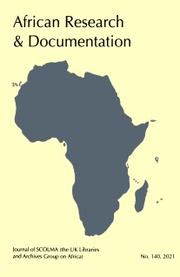No CrossRef data available.
Article contents
Information provision for rural Ghana
Published online by Cambridge University Press: 25 April 2022
Extract
With a population of roughly 15 million, Ghana covers a land area of approximately 92,000 sq. miles., almost the same as that of the United Kingdom of Great Britain and Northern Ireland. The country is divided into 10 regions, with English being the official language used in schools and for business. The educational programme follows, to a large extent, the pattern of Western (chiefly British) ways. A striking and potentially disturbing feature of the population is its youthfulness. The highest population densities are found in the urban and farming areas of the southern part of the country. Despite considerable urbanisation following World War II and independence in 1957, rural dwellers still represent 70-80 per cent of the population. Altogether, there are no less than 75 different languages and dialects, each more or less associated with a distinct tribal group. Fortunately, the divisive tendencies which might be expected to arise from this situation have been kept under control, largely as a result of imaginative governmental policies over many decades.
- Type
- Articles
- Information
- Copyright
- Copyright © International African Institute 1990


